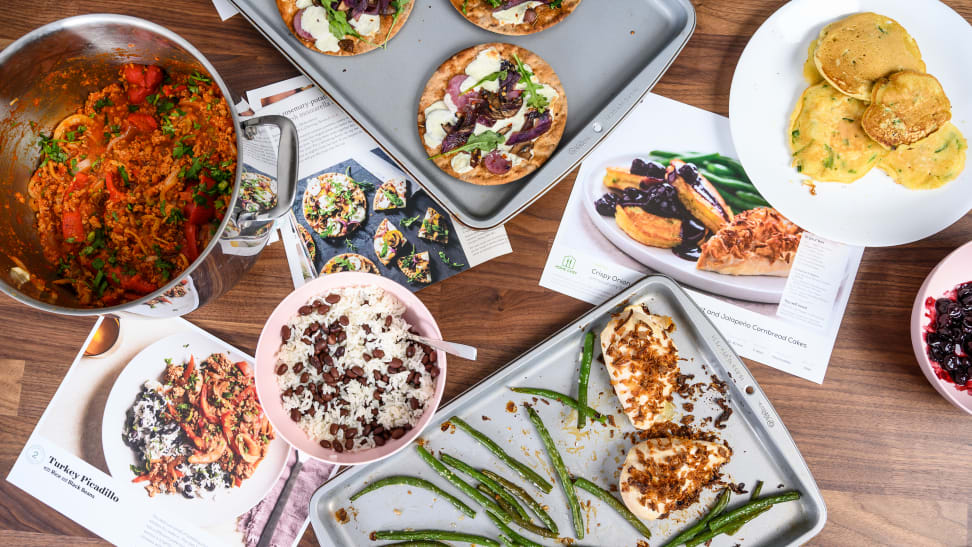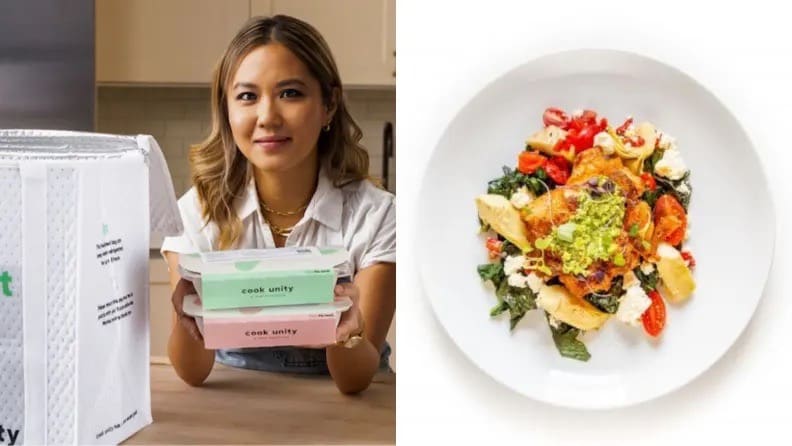Signing up for a meal kit? Here's what you need to know
I've tested every meal kit on the market—here's what I've learned
 Credit:
Reviewed / Jackson Ruckar
Credit:
Reviewed / Jackson Ruckar
Products are chosen independently by our editors. Purchases made through our links may earn us a commission.
With more and more shoppers interested in getting groceries delivered straight to their door, meal kit delivery services are seeing a huge surge in demand. Luckily, I’ve already tested all the major meal kits in my own kitchen—so I have some insight into what to expect from each service.
But even if you've already decided which meal kit delivery service is right for you, chances are you’re still confused about what your first box (and beyond) actually entails. While each service has different approaches to ordering, packaging, and delivery, I’ve found that most services have some baseline similarities.
Here’s what to expect once you’ve signed up:
1. You’ll get a discount on your first box

EveryPlate is the most affordable meal kit we've tested.
Almost every service we tried offers a large discount on the first box. While this is an awesome benefit for new customers, don’t let it fool you into thinking one service is much cheaper than the others. Our price breakdown for each service reflects the price you’ll be regularly paying per meal, disregarding initial discounts.
Meal kits are easy enough to cancel, but like most subscription services, they’re banking on you getting hooked in or forgetting to suspend your membership. Remember that your choice in service can be a real investment. If price is a primary concern, you may be interested in EveryPlate, the most affordable meat kit we’ve tested.
2. Your box is good to sit on your doorstep until the end of the day
Because delivery windows for these services are as broad as a full day, they package ingredients to last outside your actual refrigerator until the end of the day (i.e. when you get home from work and errands). Most often, produce and dry ingredients will be grouped in bags above ice packs, and any meat will be fully insulated below ice packs.
3. The packaging is going to be bulky and cumbersome
As much as certain services pride themselves on eco-friendly boxes, there’s no way around the massive amounts of packaging that go into meal kit delivery. Disposing of the large, insulated cardboard boxes and ice packs can be a hassle, and you need to stay on top of them lest you develop a small mountain in some corner of your home.
Because I moved apartments mid-testing, I was already surrounded by cardboard and trash from new furniture, so I incorporated the boxes into my regular dumpster and recycling runs.
4. Recipes are usually seasonal, but favorites are often repeated

I made over 40 dinners from 11 different meal kit delivery services—and have the recipe cards to prove it.
Every meal kit service has a different approach to repeating meals, but most try to make recipes as seasonal as possible to keep you from getting bored and to guarantee fresh, sustainable produce. That being said, most companies make note of their most popular meals and offer them many weeks a year, regardless of season.
If you really love one of your meals, hold onto the recipe card for future reference so you can request it again—or make it yourself using store-bought ingredients. To this day, I still whip up the Bánh MÌ Burgers from when I first tested HelloFresh.
5. Cook your meals soon after receiving them
Meal kit ingredients are typically fresh and high-quality, but there’s nothing special preserving them—they’re just like what you buy from the grocery store. Because of transit times, they might actually be older than what you buy from the store! That’s why it’s important to give them priority in your fridge and cook them as soon as possible.
Use common sense when approaching certain dishes—seafood, fresh greens, and chicken should be prepared first, while red meat, pork, and harder produce can last a few more days. Freeze any meat you won’t be eating in the first few days after receiving your box.
6. Cancel at least one full week before you want your last box
Most meal kit companies have solid customer service and flexible cancellation policies, but it’s important to consider the long-term logistics that go into assembling your box. If you’re interested in canceling your subscription, make sure to do it at least one full week before you want your last box. If you want to skip a week or take a break from deliveries, most services allow you to make those selections, too.
7. You can find some meal kits in grocery stores
To combat the high operational costs of delivery-only services, many meal kit companies have partnered with (or been acquired by) major food stores and are now offering their kits in the grocery aisles.
While we only tested delivery services, many of the recipes we tried are also available in stores for equal or lower prices. If you’re curious to try a meal before you subscribe to a service, or you’d rather incorporate meal kits into your regular grocery orders or trips, these are good options at your local chains like Stop & Shop, Safeway, and Kroger.
8. Some companies now offer pre-prepared and heat-and-eat meals

CookUnity is the best premade meal delivery kit we tested.
We've noticed a recent trend toward speed and convenience in the meal kit world, both with traditional companies like the ones we've tested in our roundup and with frozen and ready-to-eat brands. We separately tested five of the best pre-made meal delivery services that might interest you if you don't have time to cook.
